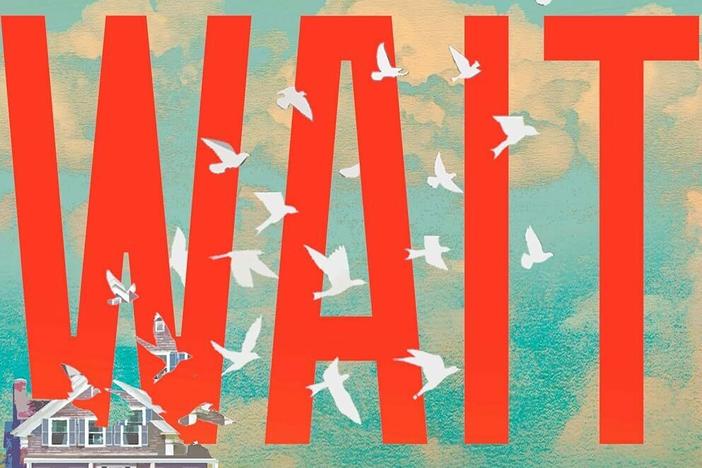Section Branding
Header Content
A creation myth in Sheila Heti's 'Pure Colour' has art critics as evolutionary stars
Primary Content
Sheila Heti is famous for writing about herself. Her early fiction is abstract, sometimes fable-like, but her breakthrough 2010 novel How Should a Person Be? comes explicitly from her life: it helped launch the autofiction craze of the past decade, and portrays sex, friendship, artistic ambition, and rootlessness with jarring honesty. Her 2018 follow-up, Motherhood, contains the same self-expository impulse, directed at the decision to have — or not have — children. Both books mix granular detail with philosophical questioning; both are written in plain prose that gives even their dirty sections an oddly naïve air. Indeed, naïvete is key to both novels: it saves Heti's self-examination from seeming self-obsessed.
But autofiction has lost its innocence. Twelve years ago, it was innovative; now, it can often feel derivative, fake or tired. Its stars — Rachel Cusk, Karl Øve Knausgaard, Ben Lerner, Tao Lin — have either moved on or are trying to. So is Heti. Her tough-to-classify new novel, Pure Colour, forsakes both autobiography and detail, though it retains her commitments to philosophy and to the spirit of innocence. In theory, its story is both straightforward and grown-up: Mira, the protagonist, is an aspiring art critic who gets sidetracked by grief over her father's death. In practice, however, Pure Colour can feel less like a real novel than like a bedtime story for adults: it mixes real and surreal elements, often veering into creation myth or Socratic-style dialogue. It is, frankly, difficult to say how successful the result is: Pure Colour is simultaneously wise and silly, moving and inscrutable. It is also indisputably working hard to be new. Reading it is refreshing, even when it fails to satisfy, which is more than I can say about the majority of conventional novels, which try less hard for lesser rewards.
Pure Colour consists, basically, of two loosely twined narrative strands: Mira and creation. In Heti's idiosyncratic mythology, God is an artist, and our present world is merely a "first draft." Plants, in their infinite silence, are "the audience of creation"; humans, who love to complain, are art critics. In Pure Colour, being a critic is like being a rabbi or a sage: a rarefied, close-to-God role, if performed correctly. (Speaking as a critic, I would say this is the book's most fantastical element, including a long passage in which Mira turns into a leaf.) Critics and artists, in the novel's cosmogony, were created to be spiritually akin to birds, beholding the earth from above. Everyone else is either a bear, devoted to those in their immediate grasp, or a fish, committed to bettering the situation of the many.
Heti's three-animal split is appealing in the way of an Enneagram or Myers-Briggs test: picking your animal is fun, if only superficially revealing. Much of her mythology falls into this category. Ditto her explicit philosophizing, which covers social media, climate collapse, and various other contemporary troubles and crises. Pure Colour would have no staying power were it not for the Mira plot, which Heti constructs via the bird-fish-bear device.
Mira, unsurprisingly, is a bird—after all, she is the star of a book in which art criticism is the peak of humanity. She isn't very skilled in her role, though, and plainly wishes that she were a bear like her dad or a fish like her crush, Annie. Indeed, her birdiness is a source of sorrow and failure. She cannot reciprocate her dad's bearish affection properly; nor can she get Annie, whose attentions are fishily divided, to concentrate on her. In fairness to Annie, Mira's efforts are no good. She is far more attracted to beauty than to Annie; it bears noting that sex, which seems to bemuse her, appears in the novel only in the form of metaphorical language, never as a physical act.
Mira's confusion and unhappiness give Pure Colour its depth, especially after her father dies. Without him, her world feels "stripped of any arrows, any direction, any sense." Her sorrow takes her in surreal directions and leads her to strange philosophical conclusions, yet, even at its weirdest, it is palpable. In fact, Pure Colour works better when it's weird than when it isn't. Heti is very good at getting readers to share Mira's sad, baffled wonder.
Some may argue that Mira is herself a Heti stand-in, on the grounds that Heti's father passed away in 2019. But to read Mira as her creator, or as any real person, would be to miss the book's point. Pure Colour aims to refresh readers' perceptions of the world as we see it: to turn what seems set and complete into an "anarchic, scrappy" first draft. Its creation passages mainly fail to do so, but its Mira passages succeed. Often, I wished Heti had stuck to the latter. But without the insistent innovation of the former, would I have been ready or willing to look at the world anew? Hard to say.
Lily Meyer is a writer and translator living in Cincinnati, Ohio.
Copyright 2022 NPR. To see more, visit https://www.npr.org.
Bottom Content




